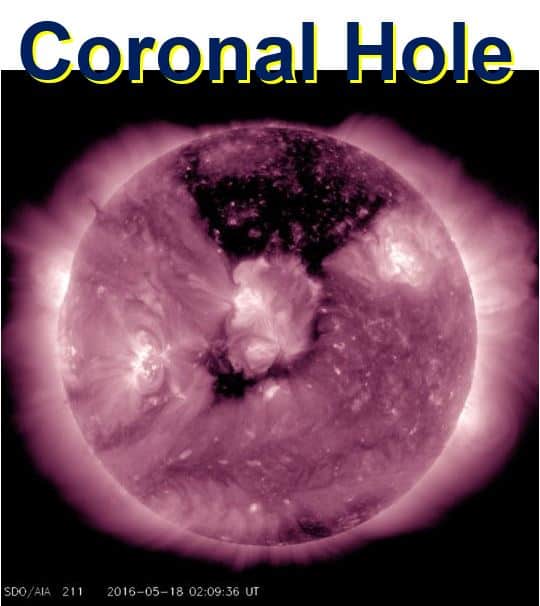A giant coronal hole has been spotted on the surface of the Sun by NASA’s Solar Dynamics Observatory (SDO) – it is several times larger than Earth. NASA insists these holes are often observed and pose no threat to human life.
The large dark spot is a gap in the Sun’s corona – an aura of plasma that surrounds it. Holes in the Sun’s corona are a regular feature, says NASA’s Solar Dynamics Observatory, an orbiting space observatory – part of the Living With a Star programme – that has been observing our Sun since 2010.
The Solar Dynamics Observatory (SDO) aims to understand the influence of the Sun on Earth and near-Earth space by studying the solar atmosphere in several wavelengths simultaneously.
 A large coronal hole observed by the Solar Dynamic Laboratory. (Image: sdo.gsfc.nasa.gov)
A large coronal hole observed by the Solar Dynamic Laboratory. (Image: sdo.gsfc.nasa.gov)
The Solar Dynamics Observatory made the following announcement online:
“A substantial coronal hole had rotated so that it temporarily faced right towards Earth (May, 17-19, 2016). This coronal hole area is the dark area at the top center of the image [above]. They usually appear dark when viewed in wavelengths of extreme ultraviolet light.”
“Coronal holes are magnetically open areas from which high-speed solar wind streams into space. This solar wind can cause aurora displays when it reaches Earth several days from now.”
What are coronal holes?
The Sun continually releases hot gases from its surface, a steady stream of particles – consisting mostly of electrons and protons – which we call the ‘solar wind’.
The solar wind flows out from the Sun with much greater intensity through the coronal holes.
Dark area on sun’s upper half, known as a coronal hole, seen by a @NASASunEarth observatory: https://t.co/M8sKKVlxKr pic.twitter.com/PWcOA5WjrF
— NASA (@NASA) 26 May 2016
Magnetic field lines that exist on the Sun’s surface ordinarily form closed loops that keep the gases contained. Coronal holes are places where these magnetic field lines do not form closed loops – they do not close back on themselves – but instead stick straight out into space. Scientists do not know where these field lines reconnect.
This leaves an open channel through which the solar wind can blast freely, with nothing obstructing it.
Large coronal holes often lead to gusty solar winds. Most solar winds generally leave the Sun at about 400 kilometres (250 miles) per second. However, the solar wind that blasts through the centre of a coronal hole travels at 800 kilometres (500 miles) per second.
These more powerful solar winds – the ones originating from coronal holes – take from two to four days to reach Earth and can disrupt our satellite communications and other electronic equipment across the planet. Stronger auroral activity – Northern Lights and Southern Lights – can be expected when solar winds are more intense.
Video – Coronal Holes
